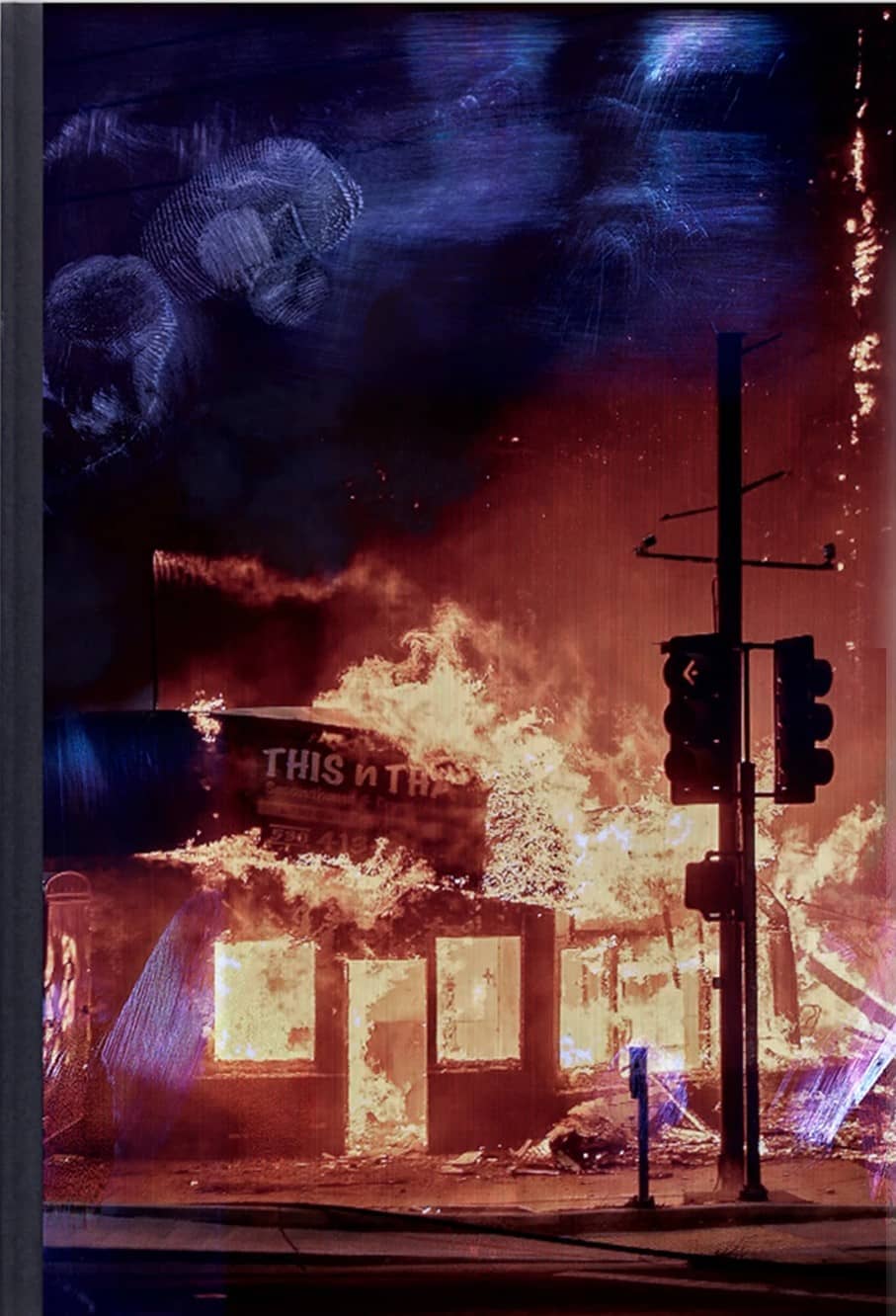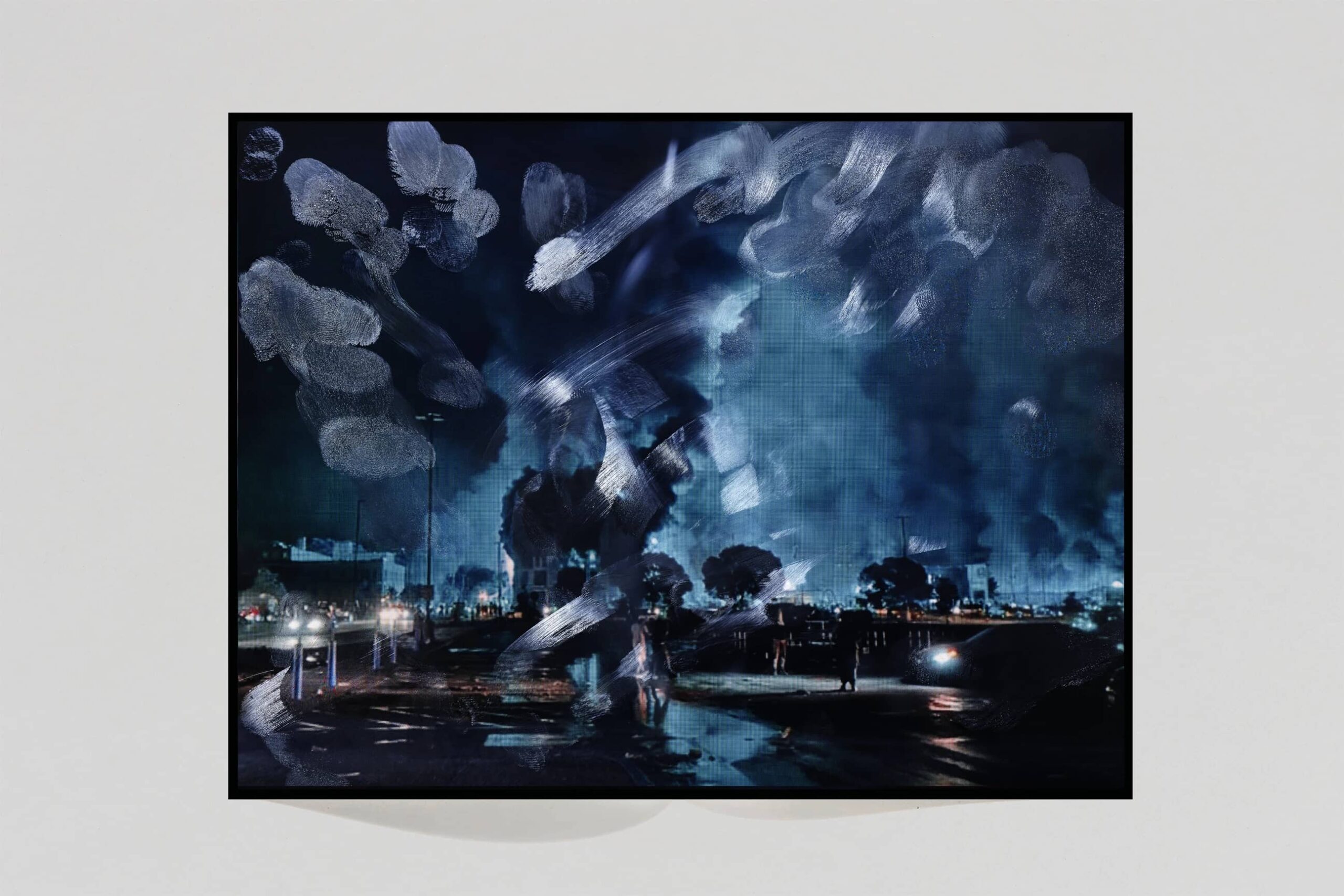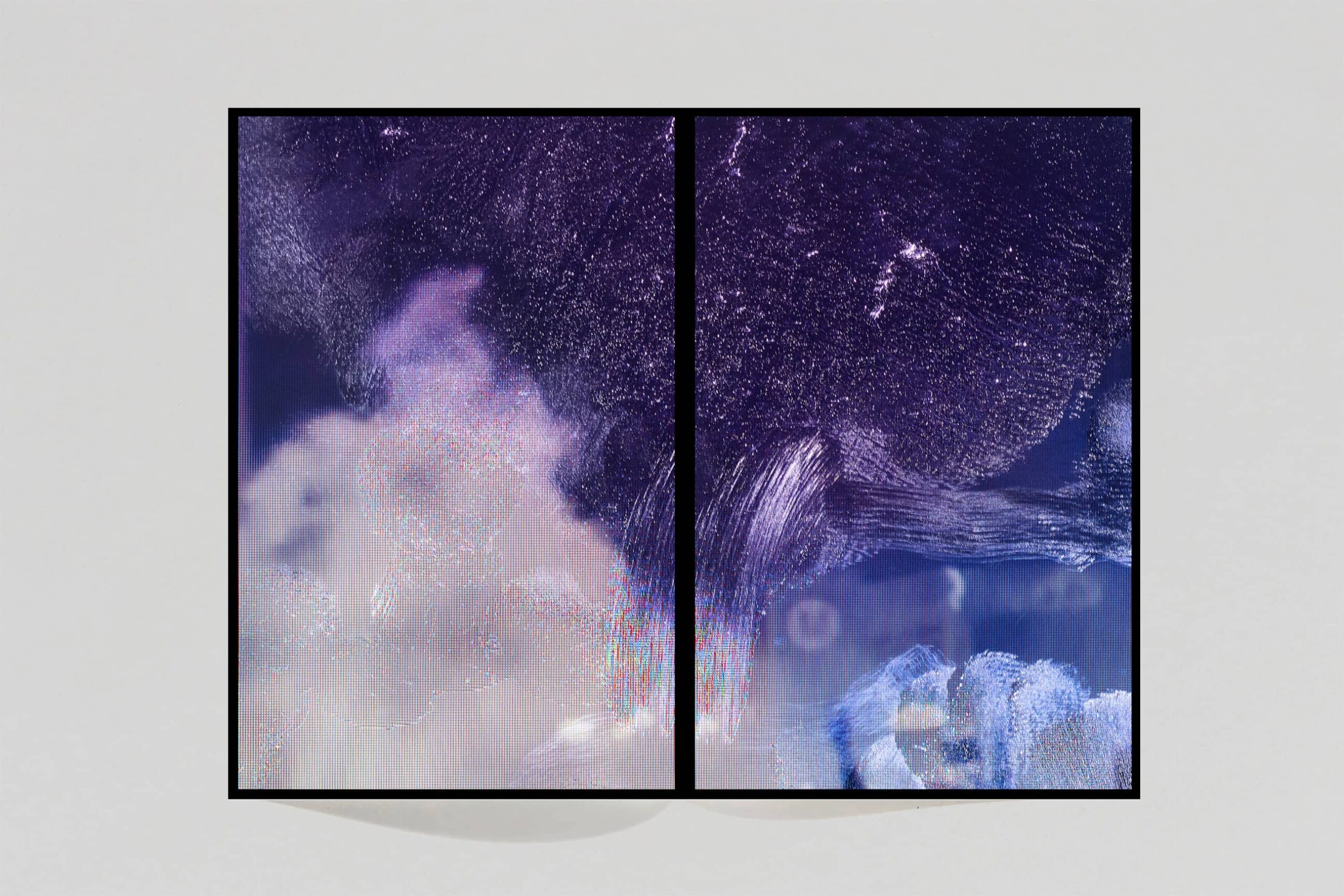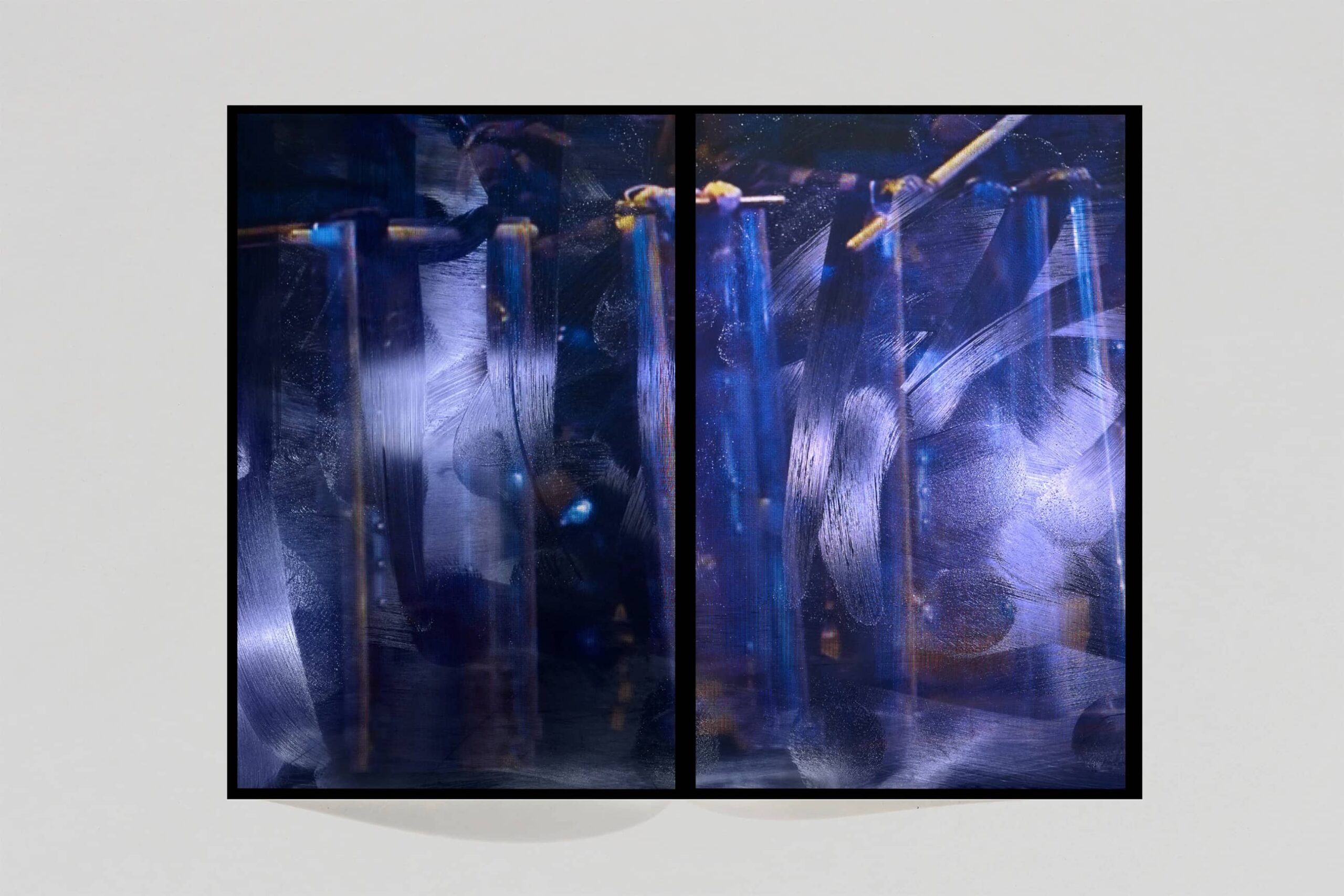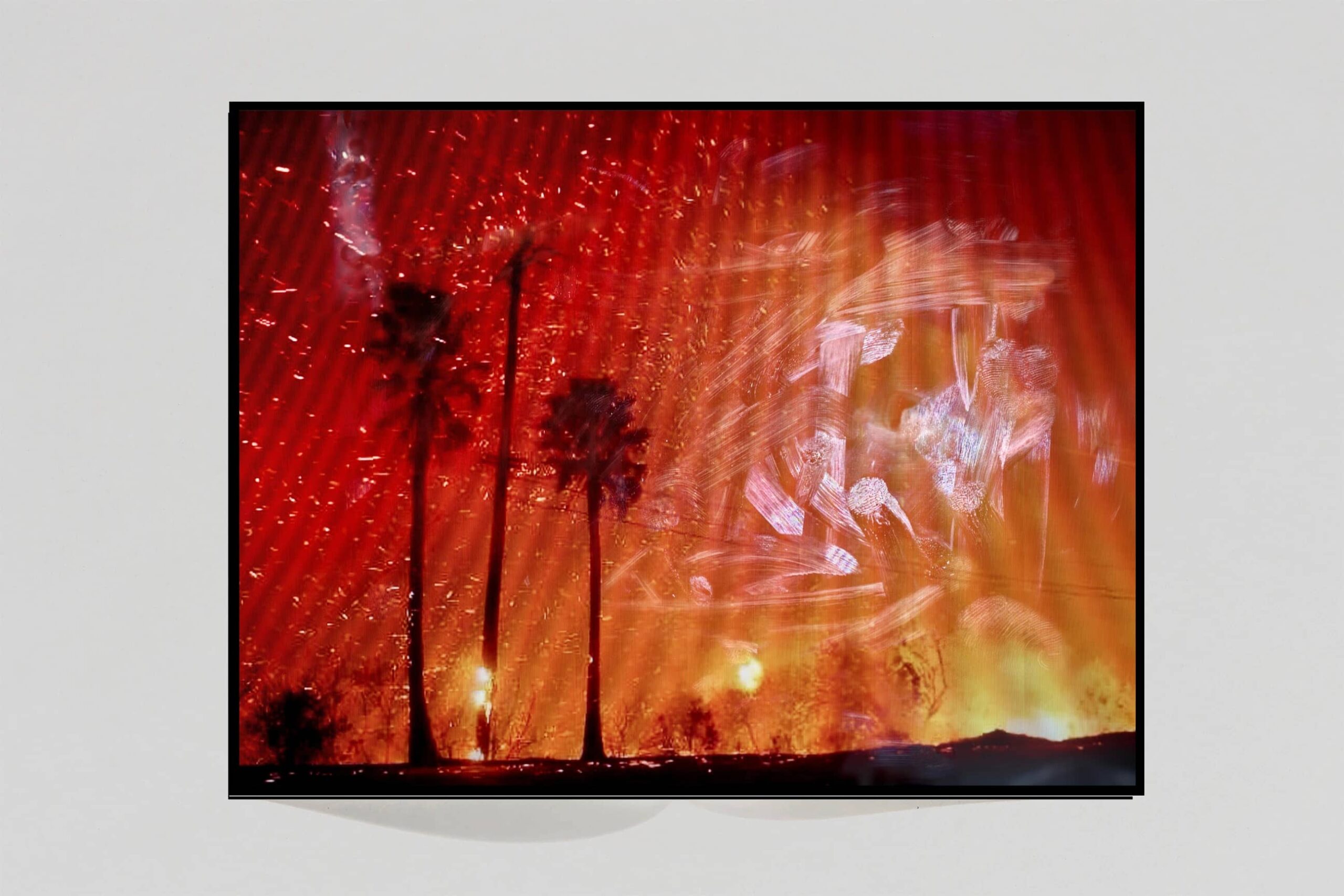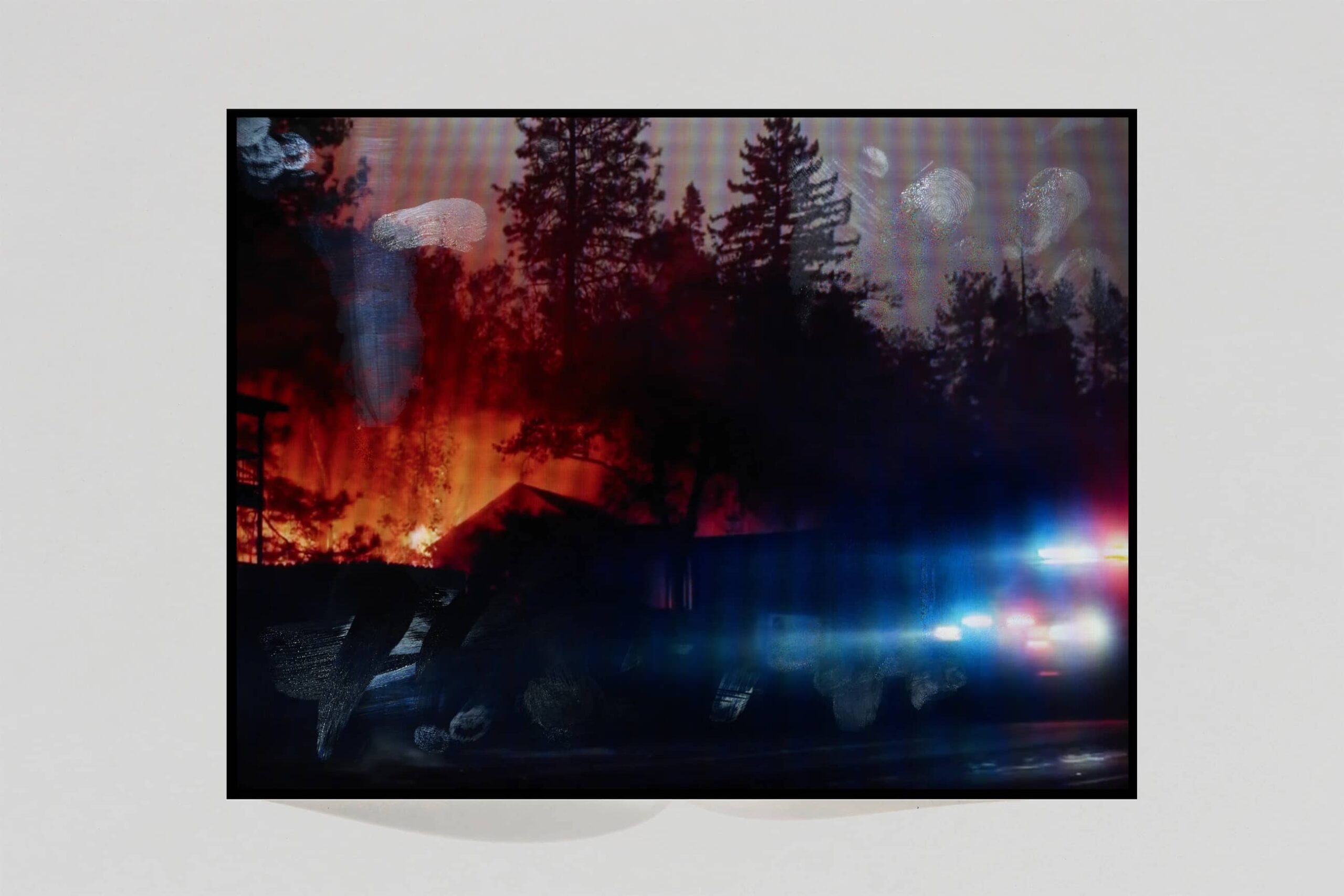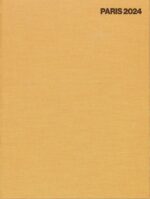Le projet Surface Tension de Tabitha Soren est réalisé en filmant la crasse et les débris qui s’accumulent sur son iPad. Les images d’arrière-plan sont appropriées de ses divers appareils via les médias sociaux, des images qui lui sont envoyées par SMS et de son historique Web. Soren crée les images sur la culture numérique avec une caméra analogique grand format. Les gestes vigoureux et expressifs à la surface de l’image reflètent le conflit entre la réalité et la fiction et entre nos vies incarnées et nos vies médiatisées en ligne. Les photographies mettent en évidence ce que nous essayons normalement de regarder au-delà et d’ignorer sur nos écrans. Les images montrent le monde extérieur dystopique tourbillonnant avec les empreintes digitales et les taches graisseuses de notre moi incarné. Les marques humaines semblent en contradiction avec le détachement glacial et l’objectivité des informations qui nous parviennent, sans relâche. Dans ce projet, le spectateur est obligé de voir un objet du quotidien d’une manière qu’il ne voit généralement pas. Le livre est accompagné d’un essai de Jia Tolentino, rédacteur pour le New Yorker et auteur de la collection d’essais Trick Mirror : Reflections on Self-Delusion.
Tabitha Soren’s project Surface Tension is made by shooting the grime and debris that accumulates on her iPad. The background images are appropriated from her various devices through social media, images texted to her and from her web history. Soren creates the images about digital culture with an analogue large format view camera. The vigorous and expressive gestures on the surface of the image reflect the conflict between reality and fiction and between our embodied lives and our online, mediated lives. The photographs put in sharp focus what we normally try to look past and ignore on our screens. The images show the dystopian outside world swirling with the fingerprints and greasy smears of our embodied selves. The human markings are seemingly at odds with the chilly detachment and objectivity of the information that flows towards us, unrelentingly. In this project, the viewer is forced to see an everyday object in a way they usually don’t. The book is accompanied by an essay by Jia Tolentino, a staff writer for the New Yorker and the author of the essay collection Trick Mirror: Reflections on Self-Delusion.

